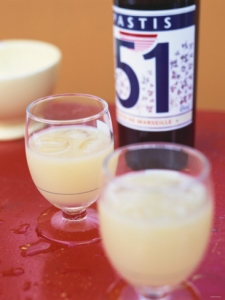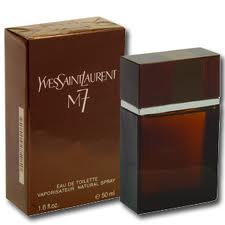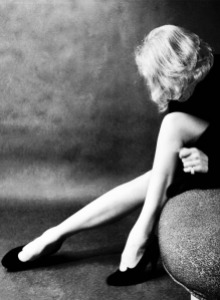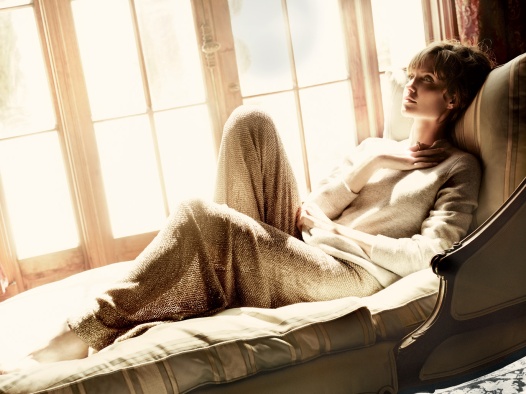Imagine a pool of molten amber, covered with the sheen of fresh citrus oil. It’s like a thin film covering the thick, unctuous depths below. At the very bottom of the pool is a thin layer of white. Not sand, but powdered vanilla. That is the image evoked by Les Néréides  Imperial Oppoponax, a unisex fragrance that is all sweet myrrh, amber, sandalwood and powdered vanilla.
Imperial Oppoponax, a unisex fragrance that is all sweet myrrh, amber, sandalwood and powdered vanilla.
Les Néréides is a French perfume house that initially started in the world of expensive, high-end costume jewelry before branding out into perfume. Their fragrances represent their overall ethos of the most basic, pure and simple ingredients but at the most luxurious level. They eschew expensive or fancy bottling, preferring to opt for a minimalistic aesthetic, both to appearance and, to some degree, the perfume itself.
Imperial Oppoponax embodies that aesthetic very well. It also embodies something else: vintage Shalimar by Guerlain. It’s incredibly similar, to the point that I’m in a  slight state of disbelief. (And joy.) Those who mourned the loss of their beloved legend to the horrors of IFRA restrictions and reformulations should rejoice. Because I could swear I’m wearing Shalimar, particularly in its dry-down stage! Imperial Opoponax (which has now been renamed simply “Opoponax”) is a mere eau de toilette, but it truly conjures up the glories of Shalimar at its best — both in the stronger parfum concentration and in its vintage state, before Shalimar was destroyed in a haze of synthetics and IFRA-mandated changes. (“IFRA” is the international perfume federation whose 2010 rules on the amount, type and concentration of certain key ingredients has forever altered the nature of the perfume world for the worse.)
slight state of disbelief. (And joy.) Those who mourned the loss of their beloved legend to the horrors of IFRA restrictions and reformulations should rejoice. Because I could swear I’m wearing Shalimar, particularly in its dry-down stage! Imperial Opoponax (which has now been renamed simply “Opoponax”) is a mere eau de toilette, but it truly conjures up the glories of Shalimar at its best — both in the stronger parfum concentration and in its vintage state, before Shalimar was destroyed in a haze of synthetics and IFRA-mandated changes. (“IFRA” is the international perfume federation whose 2010 rules on the amount, type and concentration of certain key ingredients has forever altered the nature of the perfume world for the worse.)
Imperial Oppoponax is classified as a “Oriental Woody” on Fragrantica and its notes are not complicated:
citrus, opoponax (sweet myrrh), amber, vanilla, sandalwood, and benzoin (resin).
For point of comparison, Shalimar has a few more: citrus; lemon and bergamot, jasmine, may rose, opoponax, Tonka bean, vanilla, iris, Peru balsam and gray amber. (And, yet, on me, Imperial Oppoponax has a slightly similar citrus opening and an identical dry-down.)
Imperial Oppoponax opens with a sharp, almost masculine burst of citrus. There is a definite feeling of classic men’s colognes in its sharpness; impressions of Guerlain‘s Habit Rouge cologne for men float through my mind along with Guerlain’s Shalimar. It’s definitely the opening of a very intense citrus-y, woody, aromatic oriental. I put on some vintage Shalimar parfum on my other arm and compared the scents. Shalimar is richer in its citrus start, more nuanced and complex, with florals and greater warmth. Imperial Opoponax is much closer to Habit Rouge with its crisp, fresh, faintly herbal twist on a citrus start.
Ten minutes into the opening, hints of the sweet myrrh and resins begin to tiptoe into the picture. You can find more details on benzoin and sweet myrrh in my Glossary, but,

Benzoin
in a nutshell, benzoin is a type of resin that has a light, sweet, often powdery vanilla scent, while sweet myrrh can range from slightly nutty and amberous, to faintly herbal and balsam-like.
According to NST, opoponax “has a sweet,
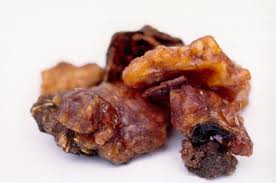
Opoponax
balsam-like, lavender-like fragrance when used as incense. King Solomon supposedly regarded opoponax as one of the ‘noblest’ of all incense gums.” Here, the balsam element to opoponax adds a woody, almost smoky note to the perfume, while the lavender is an aromatic.
The two notes together, along with that citric start, solidify my impressions of old Habit Rouge. I happen to adore Habit Rouge with a passion, so I can’t stop sniffing my arm. Some find the opening of Imperial Opoponax too masculine and too strongly evocative of an old time barber shop. To me, Imperial Oppoponax is a happy trip down memory lane! Lemon and lime! Subtle lavender (but in a good way) with traces of powdered vanilla! Wood that almost smells faintly cedar-ish! God, this is lovely!
It may sound odd to think of balsam trees and lavender mixed with a very boozy, sweet, almost nutty, ambery scent and vanilla powder, but it works. Like Habit Rouge, the sharp, almost excessively zesty citric start is balanced by an immediate impression of greater depth and warmth. There is a strong hint of smokiness and incense that are emerging, but the real star is a definitely boozy amber with its undertones of powder.
The citric notes fade about 30 minutes in, leaving the rest of the perfume as one very well-blended resin booze fest. There is real intensity to the sweet myrrh and benzoin, and it’s almost narcotically heady. There is a faint sharpness or accridness to the smell, though I don’t know if it’s from the smoke — which makes me think of a weak form of frankincense –or if it’s the combination of the ingredients together.
Imperial Oppoponax is a very well-blended perfume but it might easily be called linear. From reading comments about Les Néréides style, I get the definite impression that they seek to essentially bottle the essence of an ingredient in its most concentrated, pure form. Here, it’s oppoponax and while there are other players on the stage, they are all supporting cast members to support the star and to make it shine even more brightly. I also get the crazy feeling that Les Néréides’s goal with Imperial Oppoponax was essentially to bottle the basenotes of the classics. Did you ever smell something whose basenotes or dry-down was so enchanting that you thought to yourself, “why can’t they just bottle THAT?! I would buy a full bottle of that!”
Well, I think that’s what Les Néréides tried to do here. If they didn’t seek to do so intentionally, it is the final result nonetheless. Imperial Oppoponax evokes the Guerlain classics extremely well but what it really epitomises is the dry-down on Shalimar. It starts off as Habit Rouge, and then develops into Shalimar. With every passing hour, as the Imperial Oppoponax opens further, softens and unfurls its warm heart, it evokes the sweet myrrh, ambergris, tonka bean, and vanilla base notes of Shalimar. The tonka bean and vanilla that form the Guerlinade or signature to almost all Guerlain scents is evident here, even though the sweet vanilla and powder comes from benzoin instead. And the peru balsam in Shalimar is paralleled by the balsam notes to the opoponax that both perfumes share.

A cat who clearly shares my appreciation for fireplaces and cozy atmospheres.
The middle to final stages of Imperial Oppoponax are all cozy, snuggly and warm. I felt imperious, slightly haughty and very Parisienne when I went out earlier this afternoon with Imperial Oppoponax enveloping me. But tonight, once home, the warmth and coziness made me reach for my flannel pajamas and a soft pashmina wrap, as I suddenly wished I lived someplace where a real fireplace wouldn’t be laughable. It’s a scent of great femininity but also great softness; it makes you want to cuddle and snuggle, even if it’s just with a soft blanket and your German shepherd.
Imperial Oppoponax has impressive sillage for the first two to three hours. If you spray too much, you may smell the sweet myrrh almost at the back of your nose. It has definite forcefulness, this perfume. And it does “not go gently into that good night” either, to quote the poet Dylan Thomas. No, Imperial Oppoponax stays and stays — even on me. It projected its scent solidly for the first three hours but only became close to the skin about five hours in! However, I could still smell it on my wrist for hours after that. All told, Imperial Oppoponax lasted just over 8 hours on me. Eight. Me! It’s positively shocking, especially when you consider that this is a mere eau de toilette!
It’s also an incredibly affordable eau de toilette, if not a flat out steal. Imperial Oppoponax — or just plain “Oppoponax” as it is now called — costs $70 for a large bottle (100 ml or 3.3/3.4 fl. oz.). In contrast, a 1.7 oz bottle of Shalimar eau de toilette costs $73 at Sephora. And, if I may point out once again, that would be for a reformulated version of Shalimar which smells nothing like the real, original scent, and which is full of synthetics that smell artificial and sharp. If you ever loved the middle to final notes of (original) Shalimar, then Imperial Oppoponax is a scent you may want to strongly consider. It’s almost a bargain in some ways. If, however, you never were all that fond of the powdered vanilla Guerlinade base to begin with, or if you don’t like a powdery accord to your boozy resins, then Imperial Oppoponax may not be for you.
Personally, I’m thrilled to finally have a way to smell both my beloved Habit Rouge and Shalimar, all in original vintage form and all in one bottle. I consider Imperial Oppoponax to be some sort of karmic finger in the face of the IFRA olfactory atrocities. It’s almost as though Les Néréides said, “You think you’re going to change the face of perfume history? Well, we’ll see about that!”
I don’t know how they did it, but bravo!

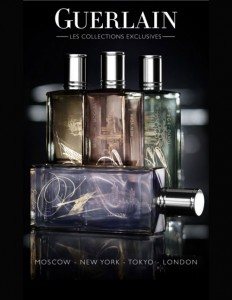 Guerlain has an exclusive, limited distribution collection of unisex fragrances entitled “Une Ville, Un Parfum” or “A City, A Fragrance.” Confusingly, the line is also often referred to as “Les Voyage Olfactifs” (An Olfactory Voyage). Until recently, the cities were Moscow, New York, Toyko and London.
Guerlain has an exclusive, limited distribution collection of unisex fragrances entitled “Une Ville, Un Parfum” or “A City, A Fragrance.” Confusingly, the line is also often referred to as “Les Voyage Olfactifs” (An Olfactory Voyage). Until recently, the cities were Moscow, New York, Toyko and London.
